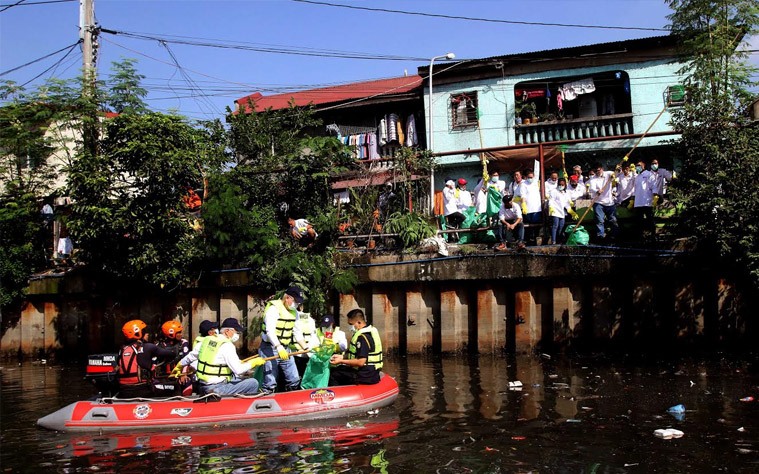
The continuing rise in Metro Manila’s population has been the cause of pollution and garbage in key areas that becomes a problem every time there are typhoons or even just strong rains. This is also true because of careless people that continue to throw their waste anywhere. Now imagine what will happen if the waterways within Metro Manila are polluted and full of garbage?
“Rivers sustain our farmlands, which is the source of the food we eat. We cannot risk serving contaminated food to our own families. This is why it is the responsibility of each one of us to ensure that waters that feed our rivers are clean and safe.”
With this in mind, Light Rail Manila Corporation (LRMC), the operator of Light Rail Transit Line 1 (LRT-1) led the Live for the Rivers Movement Coalition. A total of 450 volunteers from various sectors including the Department of Environment and Natural Resources (DENR), the City Government of Pasay, Department of Interior and Local Government (DILG), Department of Health (DOH), Department of Science and Technology (DOST), Department of Public Works and Highways (DPWH), and the Metropolitan Manila Development Authority (MMDA).

ONE FOR ALL, ALL FOR ONE. One creek at a time, LRMC and partners during the symbolic photo opt showing the company’s commitment to clean Metro Manila’s major waterways.
Pasay City’s Barangays 188, 189, and 190, together with the students and faculty of the City University of Pasay and the Asian Institute of Maritime Studies, also joined LRMC and government employees in the activity.
Estero de Tripa de Gallina is a seven-kilometer estero, considered to be the longest creek in Metro Manila, runs through the cities of Makati, Manila, Pasay, and Paranaque. It is one of the 47 tributaries of Pasig River. According to research and water quality assessments done by DENR and LRMC, ETG is no longer able to sustain life, as it has become a catchment for domestic wastes. ETG’s contaminated water then flows out to Pasig River and Manila Bay, two large bodies of water that feed the country’s farmlands that in part, provide the nation’s food.

“This initiative may just be done in one estero, but it reflects a larger social and environmental issue on how Filipinos care for their surroundings and environment,” said Jesus P.Francisco, LRMC President & CEO, “LRMC wants to be able not just to raise awareness, but to engage more Filipinos to take action, and in the process, create advocates for the environment.”
Estero Tripa de Gallina is one of the eight major waterways that needs to be cleared in order for rainwater to easily find its way to Manila Bay. Other waterways includes San Juan River, Tullahan River, Manggahan Floodway, Maricaban Creek, Pasig River, Estero de Sunog Apog and Estero de Maypajo.





